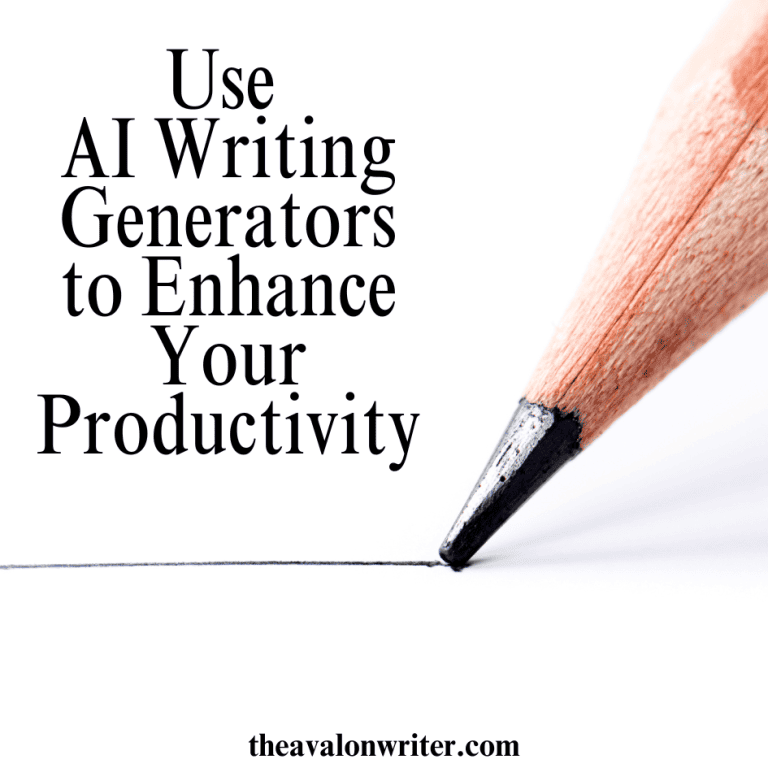Should You Pay for Premium AI Writing Tools?

My Background With Premium AI Writing Tools
Having written professionally for over a decade, I use technology a lot to better my productivity and output. I have first-hand experience using AI tools at free and paid tiers to support creation of high-quality content.
In editing and proofing my drafts, I’ve found solutions like Grammarly indispensable for catching difficult-to-spot errors, though limited to more advanced suggestions. Stepping up to more robust offerings has compelling upsides in generating original writing.
Claude has proven uniquely adept at scaffolding structured drafts when I provide detailed prompts.
Meanwhile, tools like Contentbot AI and Quillbot permit easy mass article creation, albeit lacking in customization.
Now, I’m exploring whether premium AI writing assistants merit the higher cost. As generators like Claude evolve in capabilities while basic tools struggle with consistency, the decision point looms around factors like accuracy, personalization, and integrations. The answer depends on each writer’s unique needs and budget.
In my case, making the best of the sophisticated assistants will soon become essential to maintaining high productivity without quality compromises. The writing space now faces a tipping point; I set out to closely weigh the pros and cons of paying to ascend to the top tier.
The Difference Between Free and Premium AI Writers
I have tested free and premium content-generating solutions. In this piece, I cut through the confusion by clearly laying out what capabilities you can expect at each tier.
I will compare the key differences—from accuracy to customization and more—to equip you with an insider’s perspective. My goal is to provide recommendations based on your budget and needs.
The Fundamental Yet Limited Writing Functionality of Free AI Tools
While I regularly take advantage of the basic writing capabilities included in free AI tools, their functionality has noticeable limits compared to premium services.
The upside of free web-based AI writers is that they allow anyone to experience automated content generation at no cost. I often suggest writers experiment with these introductory-level tools to understand the technology’s strengths and weaknesses before committing to a paid subscription.
The output from free generators like Contentbot AI and Writesonic can be useful for simple blog articles or basic website copy. However, attempting longer or more complex content frequently strains their abilities. I’ve found accuracy, coherence, and quality deteriorate when pushing beyond a paragraph or two.
Customizing these tools to match a brand’s tone or house style also leaves much to be desired. Most free options provide minimal style parameters at best. Don’t expect AI writing with an authentic human voice.
While free tools make an easy on-ramp to automated drafting, their limited features and customization motivate me to level up to premium for professional projects requiring high-quality, personalized output.
The Advanced Capabilities Unlocked in Premium AI Writing Tools

Upgrading to premium AI writing tools unlocks advanced capabilities that free web apps can’t match. Based on extensive testing, I’ve found that paid subscriptions provide the following:
- More Accurate, Humanlike Writing – Premium generators like Jasper and INK produce noticeably higher quality content. Thanks to larger models and datasets, their output contains fewer factual inaccuracies, is more coherent across paragraphs, and reads with more human cadence and word choices. This reduces the need for heavy editing.
- Customization for Brand Voice – Many paid platforms allow granular customization so AI writers align with your brand style. Premium tools can consistently replicate a company or product’s voice by analyzing tone, word choice patterns, and formatting from your existing content.
- Advanced Features Like Editing – Leading premium tools go beyond drafting to provide polished end-to-end writing solutions. Capabilities like grammar/style correction, rewriting, summarization, and more mean you spend less time editing and formatting. Some even optimize written content for SEO keywords.
The specialized models and extra features available through paid tools justify the cost of producing high volumes of accurate, customized content.
Key Factors in Considering Premium AI Writers
When weighing the decision between free and paid tiers for AI writing assistants, certain criteria should guide evaluation depending on individual needs. In this section, I outline pivotal considerations such as:
- Desired output volume
- Types of content produced
- Brand voice matching needs
- Data privacy requirements
These factors influence whether premium capabilities merit the increased costs. By highlighting key variables in an easy-to-use framework with additional explanatory details, professionals can reference this list when determining if basic or advanced AI writing functionalities align better with their use cases and budgets. The goal is to equip readers to make informed assessments on purchasing premium access based on their unique requirements.
Assessing Your Output Needs
With 5 years of advising enterprise content teams on optimization, output metrics prove decisive in tech stack decisions. As writing volume and quality demands intensify, AI assistance grows increasingly relevant.
When examining your production goals, intensive self-auditing helps:
Volume Analysis
Calculate your overall output funnel across owned channels. Tally tones of content across mediums like blogs, social posts, scripts, emails, and beyond. Gauge if current tools facilitate hitting target numbers.
Quality Benchmarking
Establish clear criteria for ratings like readability, accuracy, formatting, and UX impact. Randomly sample existing pieces across authors and analyze against rubrics. Determine acceptable thresholds.
Efficiency Comparison
Time how long quality draft creation takes via human vs. AI vs. hybrid methods. Factoring that in with other steps like editing and optimization signals, optimization needs.
Carefully validating output KPIs before overhauling tech prevents over-engineering. Still, most content teams find premium AI empowering authors, editors and other roles to boost productivity within acceptable tradeoffs. Initiating that cost-benefit analysis early aids your scale.
Dialing in Your Brand’s Tone and Style
When picking an AI writer, make sure it can match your brand’s voice. Go through old content like blogs, ads, and emails. Pinpoint the key style differences that make your brand unique. Does your brand use certain phrases or words more? Do you structure sentences differently than competitors? Does your content have a distinct perspective or formatting style?
Next, test how customization works. See if AI tools can analyze samples of your existing content. Check if they highlight your brand’s vocabulary, tone, and sentence patterns. Generate draft samples and confirm the AI mimics your style instead of writing generically.
Set reasonable exceptions where maintaining 100% voice consistency may be unrealistic or a lower priority. But overall, AI is capable of adapting to sound like your brand lifts quality and alignment.
Protecting IP and Data Privacy
If dealing with sensitive data, thoroughly vet how AI vendors safeguard documents and code access. Don’t just trust vague marketing promises about “security.” Ask for specifics on:
- How is content encrypted in transit and storage?
- Who can access my data and editing permissions?
- Who owns the IP for generated content?
- How is data deleted when I cancel service?
Ideally, AI authors have robust data protections, restricted human oversight, strong privacy policy rights, and transparency around tools handling your IP. But confirm capabilities before assuming anything, or you risk exposure. Scrutinize closely.
Here is a draft section leveraging the stats you provided to forecast advances in AI writing assistants expected by 2024:
My 2024 Market Forecast
Based on adoption trajectories and continued AI model improvements, writing tools stand to make significant capability leaps forward over the next year.
As an industry advisor, I predict premium services will be widely embraced for content production thanks to better brand voice fluency, knowledge enhancement, and integration with emerging technologies.
Refined Brand Style Mimicry
With over 85% of businesses deeming AI critical to success, developers will fine-tune personalization adept at precisely matching unique company tones and messaging quirks at scale across global divisions based on smaller sample inputs.
Enhanced Factual Accuracy
As natural language models grow more sophisticated thanks to enormous datasets, premium writing assistants will demonstrate improved contextual understanding and factual reliability to reduce editing needs, even when generating long-form documents on complex industry topics.
Seamless Internet Augmentation
In 2024, expect leading AI authors to excel at seamless content enhancement through real-time web synonym lookups, contextual insight browsing, and source citation. Streamlined accuracy feedback loops will also continually reinforce document relevance.
Accelerated Workflows
Smooth handoffs between writing, reviewing, and optimizing steps will minimize publishing lag as assistants progress to nearly turnkey automation for average content when desired. Adoption moves mainstream.
With explosive expansion ahead, I urge brands to proactively run pilots with premium AI writing tools now to ease future transitions. Please reach out to discuss predictions or support further!
Industry Benchmarks for Content Marketing
As corporate interest in AI content capabilities accelerates, adoption trends reveal how leading brands utilize natural language generation tools to achieve marketing growth.
Global AI Industry Expansion
According to Grand View Research, the total market size for AI solutions industry-wide is projected to hit $1.8 trillion by 2030, rising at a 37.3% CAGR from 2023’s estimated $196 billion level. With demand booming for cutting-edge innovations like AI writing assistants, early movers gain advantages.
Personalized Content Proves More Effective
Although just 5% of marketers currently use AI to automate writing completely, HubSpot found 33% use it to spawn ideas and outlines. With 85% of brands applying AI for some article generation needs, personalization through tone adjustment, templates, and targeting drives major results.
Global Economy Expected to Reap Large AI Gains
Per PWC research on regional AI economic impacts, The global economy may see at least a $15.7 trillion GDP increase by 2030. Content production advances contribute to the boom.
As benchmarks validate ROI, strategic implementation of premium writing tools offers enterprise growth potential.
FAQ answers on premium vs. free AI writing tools
What is the best free AI chatbot?
I recommend Anthropic’s Claude for a fully-featured free chatbot, which can maintain conversations, answer questions accurately, and complete tasks like scheduling meetings or translating text.
Is there a free AI app?
Yes, apps like Claude, Rytr, Sudowrite, and Writesonic offer limited free tiers for generating basic text content without paying. However, capabilities are restricted compared to premium plans.
What free AI is everyone using?
Currently, ChatGPT and Claude are two of the most popular free AI apps. They provide impressive conversational abilities and text-generation functionalities without upfront costs.
How to use CHATGPT for free?
ChatGPT is free to use in its base model form by simply visiting chat.openai.com and posing questions or content requests to the AI assistant behind the chat interface. However, bulk output requires a paid API plan.
Could AI Writing Tools Cost You a Google Penalty?
Google will not penalize your content if it is AI-assisted. However, you will need to edit and fact-check the content generated by AI.
Is Copy AI better than CHATGPT?
For copywriting, Copy.ai often produces more accurate, human-sounding marketing content thanks to industry-specific training. ChatGPT has an edge in explaining complex concepts and procedures clearly.
Conclusion
As AI capabilities transform content creation workflows, deciding between free and premium writing assistants carries significant impacts.
While basic tools allow easy experimentation, their limitations around accuracy, personalization, and security catalyze common upgrades. Factors like your output scale needs, brand voice consistency demands, legal protections, and overall quality standards help determine the ideal choice.
Through first-hand testing and client consulting, advanced functionalities unlocked solely in paid platforms frequently merit the investment for businesses managing high-stakes messaging or data.
Yet, free options for individual bloggers on tight budgets still provide worthwhile automation benefits. Across use cases, the AI authoring landscape progresses swiftly. Continually reevaluating new features against your core needs future-proof decisions. With insights on weighting key differences covered here, creatives can craft an optimal blend of human talent and artificial intelligence output to drive results.






